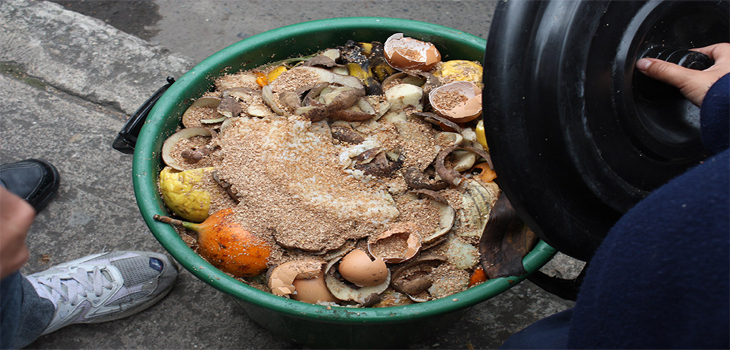Societies engaging in mass consumption have come to dominate every corner of the planet. Whether in advanced or developing counties and whether in urban or rural areas, we must face the serious challenge of handling the industrial wastes produced by our own activities of daily living. Foul odors at garbage dumps and sewage treatment plants are particularly problematic. Ideally, we must develop ways to recycle as much of our waste as possible. Unfortunately, there have been cases in which waste resource circulation has been hampered due to low-quality compost and a shortage of trained users. As a measure to help prevent such occurrences, EM has been used at waste and wastewater treatment plants all over the world. EM has enabled the suppression of foul odors and the manufacture of high-quality compost. This leads to better resource circulation.
How you can use EM products to improve resource circulation
When we pour EM・1 and Activated EM・1 into environments dominated by putrefactive bacteria, the microbiomes will be improved and foul odors will be suppressed. Altering the microbial environment in the way that EM does leads to accelerated fermentation of organic matter and a shortening of the period required to manufacture high-quality compost. With application of EM products, we can efficiently solve problems such as foul odors at waste treatment sites of all kinds (e.g., incineration, sewage treatment facility, etc). We can also improve manufacturing costs at compost factories where garbage and sewage sludge are recycled. In fact, Activated EM・1 and EM Bokashi are used in waste treatment processes all over the world, simplifying the suppression of foul odors both in- and out-side of facilities. As the result, site workers and local residents appreciate the improved environment and no longer complain about the smell. Another outcome is the lowering of costs since there is no need to use deodorants, disinfectants or pesticides, which result in environmental degradation. Likewise, the efficiency of composting leads to a shortening production period, and shrinks both the amount of waste to be disposed of and the area required for disposal. When compost is fermented by EM・1, its foul odor will be suppressed and its quality will be improved. This is how compost is enhanced and demand for the compost is increased. We have received reports about improving resource circulation ratios.
Download PDF: “How to make compost from kitchen waste”
Ref – EMRO,Japan


